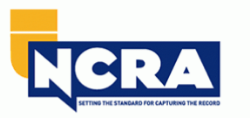Trial Presentation All-Inclusive Services for Complex Court Cases
Elevate Your Legal Game: Proven Techniques for Impactful Trial Presentations
In the competitive sector of trial legislation, the ability to provide an engaging situation can dramatically affect outcomes. What strategies will you carry out to guarantee your next test presentation leaves a lasting effect?
Understanding Your Target Market

Comprehending your audience is crucial for providing an effective trial discussion. An extensive understanding of jurors' demographics, histories, and mindsets can dramatically influence how your arguments are obtained. Tailoring your presentation to reverberate with their experiences and point of views cultivates engagement and comprehension, thereby improving the influential impact of your situation.
Begin by analyzing potential prejudices that may impact jurors' understandings. In addition, take into consideration the emotional facets of decision-making; jurors are often influenced by emotions, social characteristics, and group behavior.
Engaging visuals, when appropriate, can also aid in retention and understanding. Ultimately, understanding your target market allows you to craft a discussion that not only informs yet additionally convinces, thus raising the chance of a desirable verdict.
Crafting a Compelling Narrative
Crafting an engaging story is crucial for astounding a jury's attention and properly sharing the essence of your situation. A well-structured narrative weaves together realities, emotions, and motifs that resonate with jurors on both intellectual and psychological levels. Beginning by identifying the core message you wish to connect, and guarantee that every component of your presentation sustains this central motif.
Utilize narration techniques to humanize your customer and the situations bordering the situation. Present relatable personalities, create stress, and provide a clear conflict that requires resolution. This approach not just engages jurors yet additionally facilitates their understanding of complicated lawful issues by mounting them within a relatable context.
Usage simple language and stay clear of legal lingo that may push away jurors. By mastering the art of narrative, you can considerably improve the persuasiveness of your trial presentation.
Using Visual Aids Properly
Visual aids act as powerful devices in trial discussions, boosting the jurors' comprehension and retention of important information. Efficient aesthetic help can streamline complex data, show connections, and emphasize bottom lines, making them vital in lawful contexts.
When selecting visual help, think about the quality and importance of each thing. Charts, graphs, and infographics can distill considerable information into digestible layouts, enabling jurors to comprehend necessary truths promptly. Pictures and video clips can evoke emotional actions, producing a more extensive connection to the situation narrative.
It is important to make sure that visual help are view it now skillfully created and quickly readable. Stay clear of cluttered slides or extremely complex graphics that might puzzle as opposed to make clear. A regular design, including font selection and color system, can improve the total effect and professionalism and trust of the presentation.
Incorporating aesthetic aids needs strategic timing; present them at zero hours to reinforce your debates. Additionally, technique transitioning in between spoken explanations and visual material seamlessly to preserve engagement. Inevitably, when utilized efficiently, visual aids can considerably reinforce your trial discussion, making your arguments more influential and unforgettable to jurors.

Grasping Body Movement
Effective body movement can considerably affect the result of a trial discussion. Jurors and check my source courts are commonly subconsciously impacted by non-verbal cues, which can either strengthen or undermine the reliability of the audio speaker. Mastering body movement involves comprehending the subtleties of position, motions, faces, and eye get in touch with.
Taking on an open pose can convey self-confidence and approachability, while shut positions may recommend defensiveness or unpredictability. Gestures should be deliberate and lined up with the talked message, serving to highlight vital points rather than distract from them. As an example, utilizing hand movements to highlight an idea can enhance understanding and retention.
Facial expressions play a crucial duty in communicating emotions and objectives - trial presentation. An honest smile or a furrowed brow can communicate empathy or concern, specifically, affecting how the target market perceives the situation. In addition, preserving appropriate eye get in touch with develops a link with jurors and shows genuineness
Exercising for Excellence
Understanding body movement is just one element of providing an effective trial presentation; extensive technique is just as crucial for making sure that every aspect of the performance aligns perfectly. Effective practice allows lawyers to improve their arguments, anticipate counterarguments, and develop reactions that are both compelling and concise.
To accomplish perfection, trial lawyers ought to engage in deliberate wedding rehearsal sessions, ideally in front of peers or coaches who can give useful comments. This method not only enhances spoken shipment however likewise builds confidence in handling unanticipated court dynamics. Recording session can provide important insights right into pacing, tone, and body language, making it possible for lawyers to make required changes.
Furthermore, simulating court room conditions-- complete with time restraints and possible disruptions-- can help lawyers accommodate to the actual trial setting. This method ensures that every element, from opening up declarations to closing debates, is provided with accuracy and authority.

Final Thought
Incorporating tried and tested approaches for impactful test discussions considerably enhances the effectiveness of lawful arguments. A deep understanding of the target market, coupled with a compelling story and efficient visual aids, fosters engagement and persuasion. Additionally, grasping body movement and extensive technique add to a clear and confident distribution. By integrating these components, attorneys can develop unforgettable courtroom experiences that resonate with jurors, inevitably influencing their decision-making processes and improving situation results.